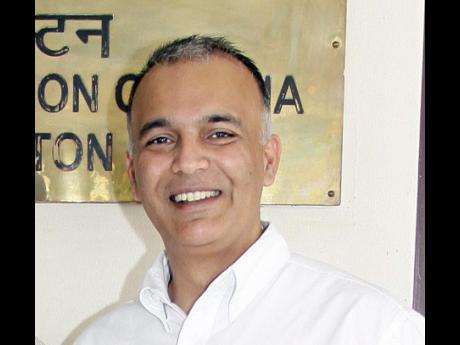Mathemagic! - Calculation Time puts fun in numbers, helps boost numeracy
Hands of a group of 20-odd grade 1 students of Port Antonio Primary School went up in unison. Everyone was eager to get a chance to be called by their teacher. No calls to go for the next school outing or a picnic, nor is it free period. These students are in a mathematics class.
This is the changing face of how a mundane, oft-intimidating world of numbers is being taught in 65 primary schools across Jamaica; the fundamental being to get the students to appreciate the subject and not see it as a chore they feel compelled to shy away from.
The children break into a song, their teacher, Novelette Graham, leading the chorus, in animated gesticulations - encouraging them to hug themselves for a job well done - it's Calculation Time folks.
Spearheading this initiative in Ministry of Education's Region 2 is Yutaro Furuta, a volunteer of Japan International Cooperation Agency (JICA). Calculation Time is an education tool used for primary mathematics education developed by one of Furuta's predecessors, Miwako Sugawara, embedded in the official curriculum of the Ministry of Education.
"When I came here and starting working," Furuta said, "I found that there was a lack of conceptual support, which needed to be looked into, so I am now making some changes in Calculation Time."
GETTING STUDENTS INVOLVED
A trained mathematics teacher, Furuta has taught in a junior high school in Japan, and brings those expertise, knowledge base, and critically, the approach to the classroom here. The key is to get the students involved in the processes, and tweak the course delivery pique their interest levels.
This methodology is working well.
"Our numeracy rate was 30 per cent in 2014-2015," said Kennecha Davis-Williams, principal of Port Antonio Primary. "It is now at 61 per cent."
The jump in the figures is quantum, and in the classroom, the students are adapting to the new and innovative methods of learning.
"Calculation Time does not tie the subject to academic gain," Davis-Williams said. "It helps the children to appreciate it."
Furuta is working to change that perception with the help of the teachers - learning is fun and play. The children use a mix of workbooks, number cards, and three-dimension tools - coloured plastic cubes - to assist in calculation.
"Calculation Time makes learning mathematics fun and it is heartening to see the efforts and work of JICA volunteers bearing fruits," said Masanori Nakano, ambassador of Japan to Jamaica. "It is a very innovative method."
Calculation Time complements the traditional approach with use of technology. Calculation Time app was launched last year April, which enables teachers and students to access across devices (phones, tablets, laptops).
A collaboration between the governments of Japan and Jamaica, Calculation Time was first introduced in 2011 in seven pilot schools and is now being applied in 65 primary schools across the island.
Back in the classroom, the children try and get the attention of Furuta; Cries of "Mr Fruta! Mr Fruta!" resonate from all corners of the class.
"My name is easy to remember," he said. "They all think I am named after the fruit juice."
Their class teacher calls the children to come and do additions with the help of the number cards. The response is instantaneous. From the frenzied waving of the hands in the air to trying to inch towards the teacher, they all want to be a part of the action.
FEEDING THE CAT
As a little one walks towards the teacher, they are given a card, which has numbers on one side and set of squares drawn on the other side; they have to say the correct set of numbers which will add to make the sum.
"Is five plus four the correct answer for nine," asks Graham from the class. "Yes, Miss! Yes, Miss!" is the answer, accompanied with a loud applause.
For giving the correct answer, the student gets to 'feed' the card to the hungry 'cat' - face of cat drawn on poster paper, with cavity cut where the mouth is, on the back is a black plastic bag, which is the cat's belly - happily fed with all the cards.
"The students are enjoying it and understanding the concepts, that is what matters," said Furuta. "It takes time and patience to work with them, and we work with their pace."
Mathematics just became exuberating.
- The trip to Port Antonio Primary School was facilitated by Japan International Cooperation Agency as a part of their press tour to visit some of the grass-roots and development assistance projects undertaken by the organisation in Jamaica. Send feedback to amitabh.sharma@hotmail.com.






